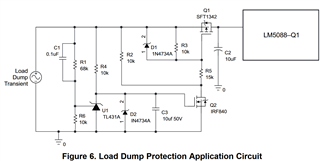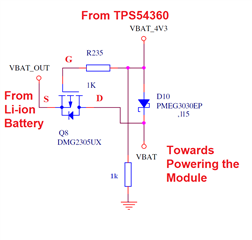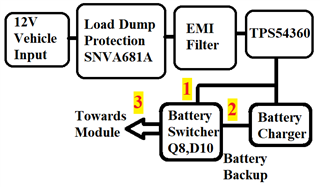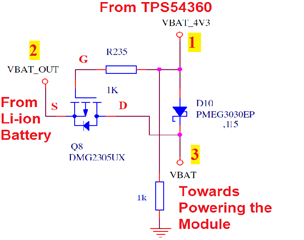Other Parts Discussed in Thread: LM5088,
Hi Team,
I intend to use the reference design mentioned in the document (1) SNVA681A – March 2015, page no. 5
Figure 6. Load Dump Protection Application Circuit, attached the image for reference.

Instead of LM5088–Q1 I am planning to use the TPS54360B.
Here my question is,
Q1. As a P channel MOSFET is used on the high side,
should we not connect the Drain of P-MOSFET towards the source side
and Source of the P-MOSFET towards the load side (LM5088–Q1)?
The reason I need clarification is because in the reference document (2) Automotive MOSFET Reverse Battery Protection,
that is the recommended orientation for the P-MOSFET on high side.
Also when we refer (3) 17TIDUC42 – November 2016,
the N-MOSFET orientation is same as mentioned in the document (2) for N MOSFET.
Q2. So should we not follow the same P-MOSFET orientation as mentioned in (2) for the circuit diagram mentioned in Figure 6?
Kindly clarify.
Reference Link:
1. SNVA681A – March 2015:
2. Automotive MOSFET Reverse Battery Protection
3. 17TIDUC42 – November 2016
Thanks in advance!
Warm regards





